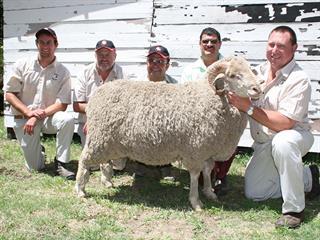“The indicator was dragged down by the lower prices fetched for the stronger types of wool, which also comprised the largest part of the offering of 11 713 bales. However, prices for most fine-wool types continued to improve and a seasonal record of R97,50/kg (greasy) was fetched for three bales wool of 16,5 microns, produced by Ray Sephton of Fascally Farms in Barkly East. The wool had a clean yield of 75,5%,” she noted.
BKB’s Basie Claassen said fine wool types (16 microns to 19 microns) retained the momentum of the past few weeks, with prices 2% to 5% dearer. Good quality fleece wool and pieces 60mm and longer (20 microns to 23 microns) were cheaper and the market indicator for these decreased by 2% to 3%. With only a few auctions remaining before the Christmas season, prices could remain unchanged, he added.
The lower-than-expected wool receipts in Australia caused Chinese processors to start buying before the inflated demand causes prices to soar even more, said Cape Mohair and Wool general manager James de Jager. At R7, the rand was 2,8% weaker against the US dollar and 0,6% down against the euro at R9,45.
Average prices for good top-making (MF5), sound, long fleeces (less than 1% seed content) were as follows: 19 microns down 0,8% to R86,11/kg; 19,5 microns up 1,3% to close at R79/kg; 20 microns 1,5% cheaper at R71,26/kg; 20,5 microns 0,8% down to R69,07/kg; 21 microns 1,7% down to R67,35/kg; 21,5 microns 2,1% cheaper at R66,10/kg and 22 microns 1,1% down to R64,97/kg. Major buyers were Standard Wool SA (4 213 bales), Modiano SA (3 653 bales), Lempriere (1 237 bales) and Stucken (1 230 bales).









